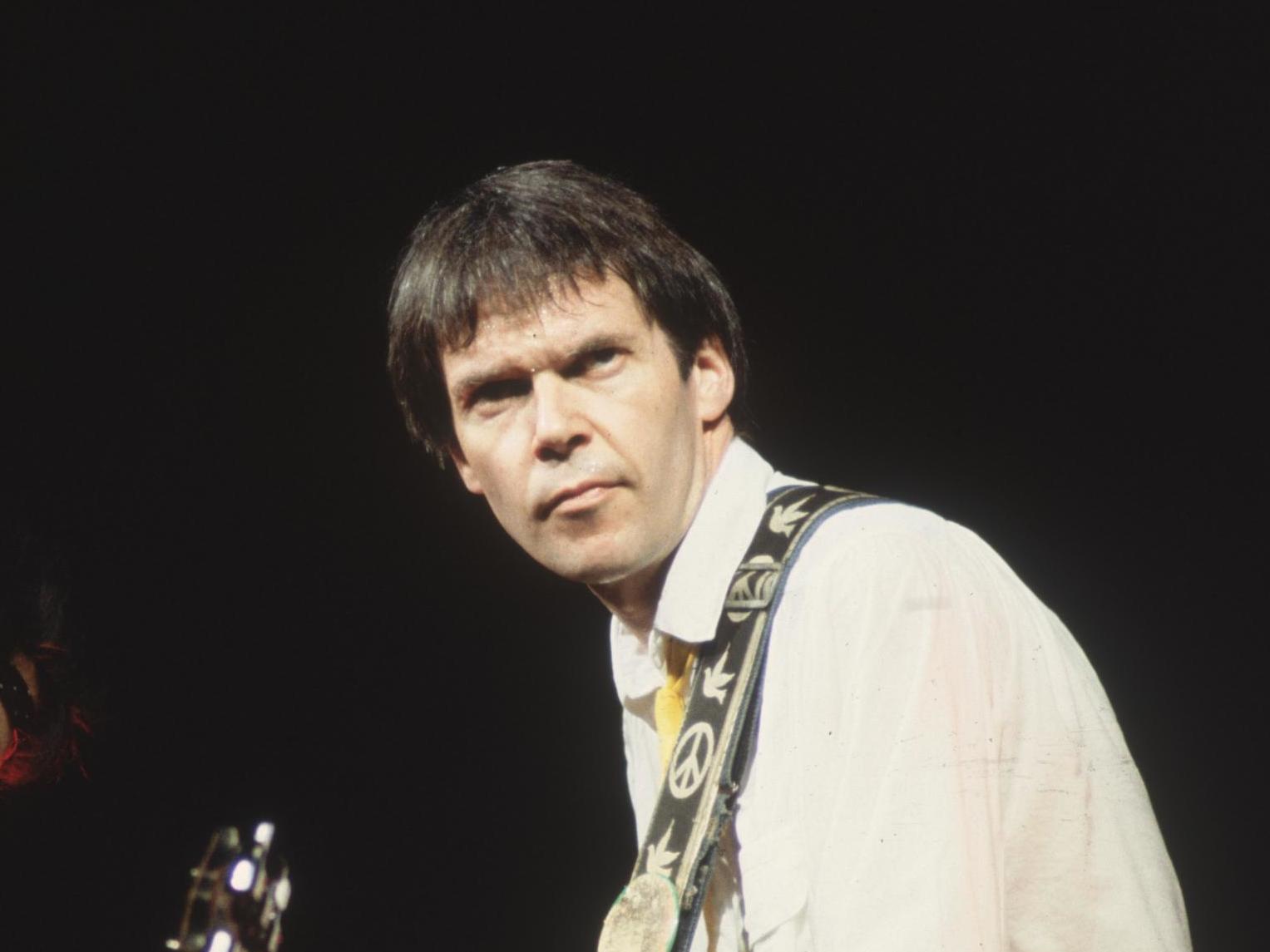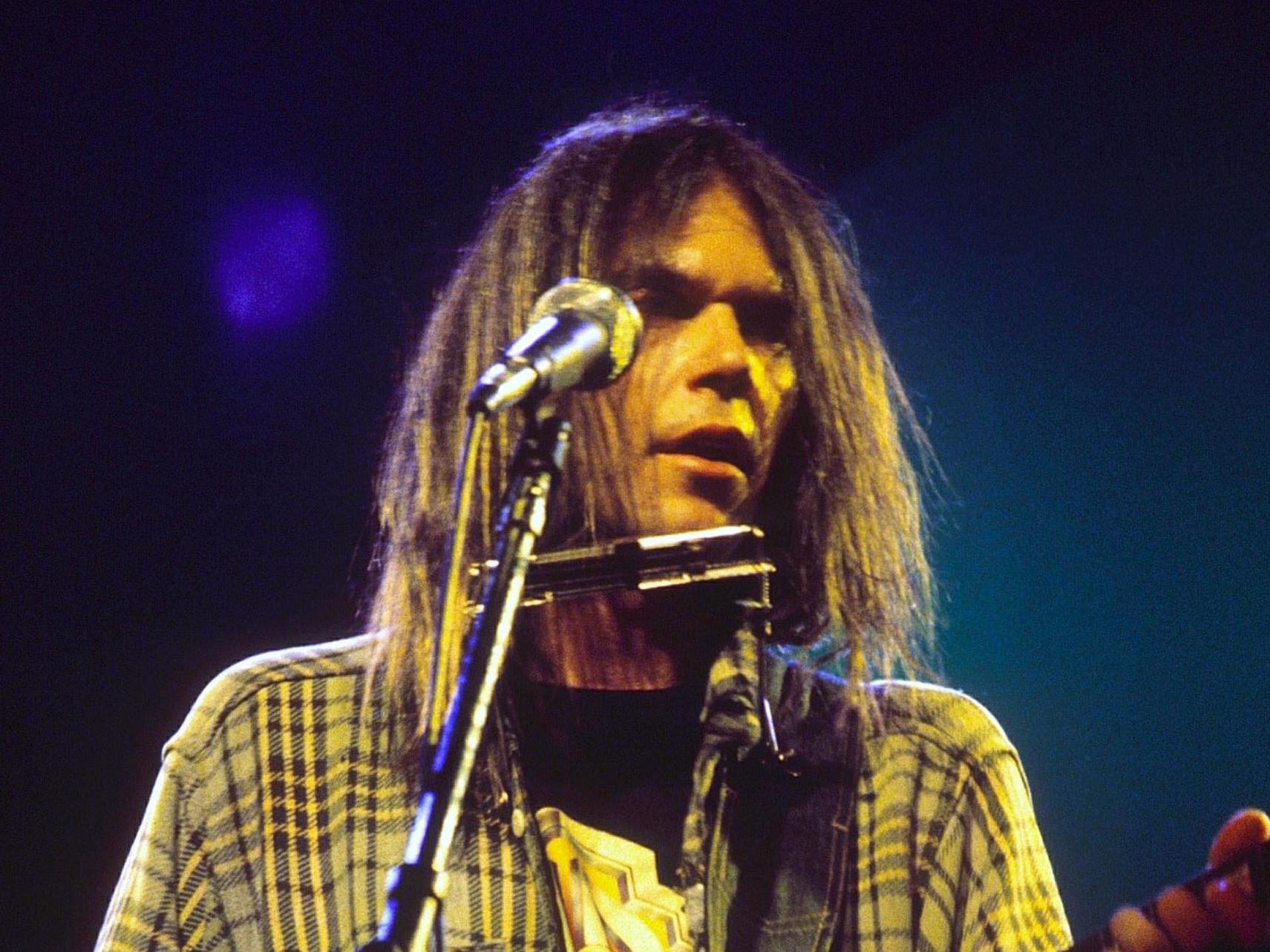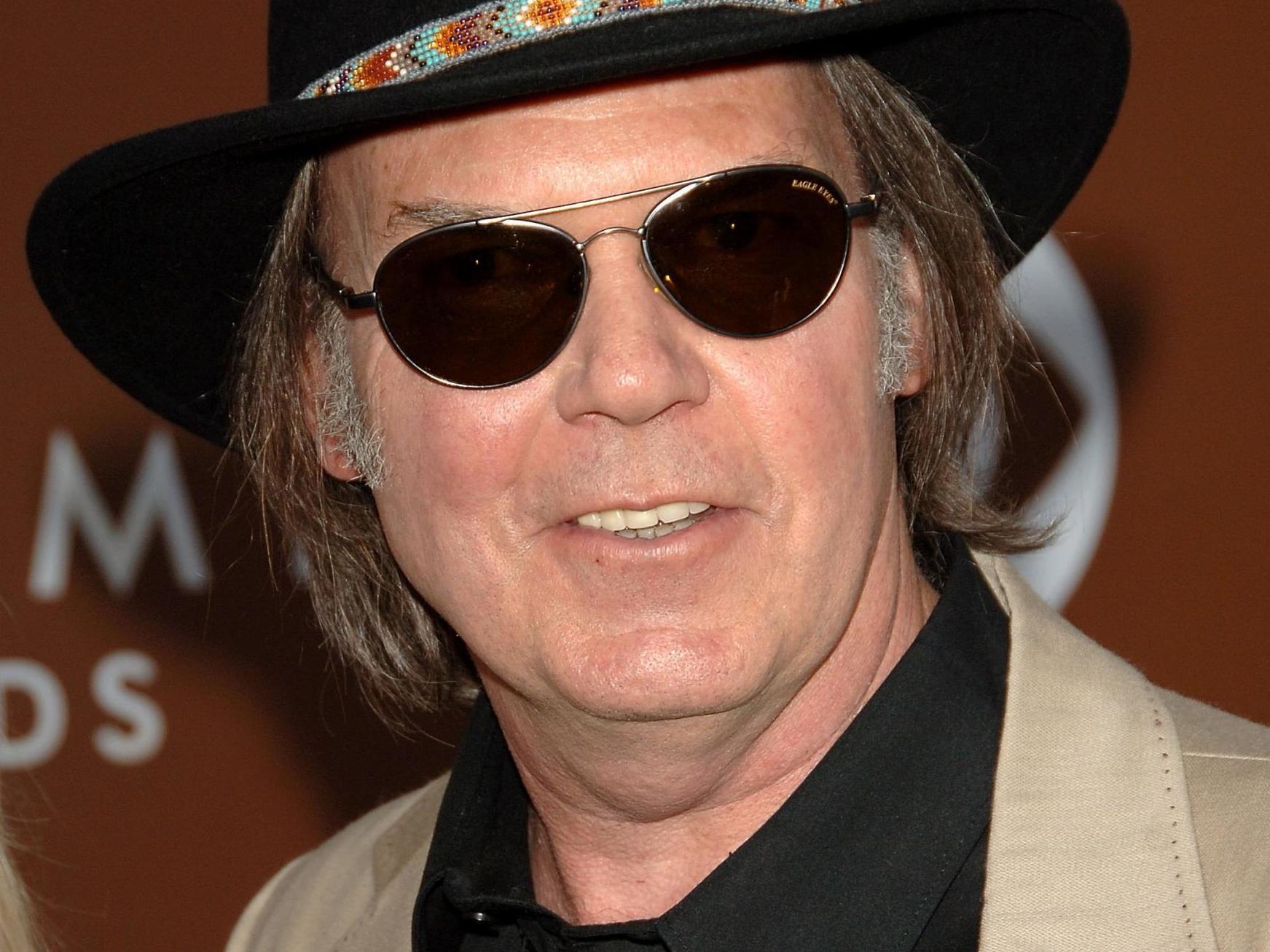The 20 greatest songs by Neil Young, from ‘Heart of Gold’ to ‘Cortez the Killer’
As Young releases his legendary ‘lost’ album ‘Homegrown’, Graeme Ross compiles the best of the prolific singer-songwriter’s back catalogue

Your support helps us to tell the story
From reproductive rights to climate change to Big Tech, The Independent is on the ground when the story is developing. Whether it's investigating the financials of Elon Musk's pro-Trump PAC or producing our latest documentary, 'The A Word', which shines a light on the American women fighting for reproductive rights, we know how important it is to parse out the facts from the messaging.
At such a critical moment in US history, we need reporters on the ground. Your donation allows us to keep sending journalists to speak to both sides of the story.
The Independent is trusted by Americans across the entire political spectrum. And unlike many other quality news outlets, we choose not to lock Americans out of our reporting and analysis with paywalls. We believe quality journalism should be available to everyone, paid for by those who can afford it.
Your support makes all the difference.In a career now in its seventh decade, Neil Young has bewitched, bothered and bewildered his legions of fans, friends, bandmates and critics alike. Determinedly reluctant to be pigeonholed, Young has always followed his muse, even if it leads to the commercial suicide of the so-called “Ditch Trilogy” of albums that followed his huge mainstream success with 1972’s Harvest. For Young, as he has often said, it has always been about the music – nothing else matters; not commercial success, nor personal feelings.
Accordingly, Young’s oeuvre stands comparison with any of his major contemporaries, with the best of it rivalling even that of Bob Dylan. Yesterday (19 June) Young finally unveiled Homegrown, his legendary lost album from 1975, which has remained unreleased until now, its contents deemed too personal for Young to share.
Now, we have the chance to learn if it deserves the hype – advance missives suggest it does. However, it’s just a little too early to include anything from it on this list of Young’s 20 greatest songs as a solo artist.
20) “Sugar Mountain” – Live at Canterbury House, 1968
This bittersweet ode to lost innocence suggests that Young, aged just 19 when he wrote it, was already mourning his own lost youth. One of Young’s most affecting and enduring songs, it famously inspired fellow Canadian Joni Mitchell’s more hopeful coming-of-age reply, “The Circle Game”.
19) “Don’t Be Denied” – Time Fades Away, 1973
This painfully graphic cut from the first part of Young’s Ditch Trilogy is one of his most overtly autobiographical songs. Covering the break-up of his parents’ marriage, unhappy school days (“The punches came thick and fast”) and his early musical meanderings, “Don’t be Denied” perfectly captures Young’s outlook on his life and career.
18) “Rockin’ in the Free World” – Freedom, 1989
After a decade of perplexing releases that had led to Young being sued by his record company for releasing music “un-representative of Neil Young” (yes, really), he bounced back with his best album in a decade. This anthemic rocker, a state-of-the-nation blast at President George Bush Snr, demonstrated that the old dog still had fire in his belly.
17) “Harvest Moon” – Harvest Moon, 1992
Two decades on from Harvest, Young produced a so-called Harvest Mark 2, which in many respects is quite the equal of its exalted predecessor. The title track, dedicated to Young’s then wife Pegi, is a melancholic beauty, a romantic, lilting, soft-shoe ballad which would have fitted seamlessly on Harvest.
16) “Old Man” – Harvest, 1972
Young in classic reflective singer/songwriter mode as his 24-year-old self puts himself in the shoes of the “old man” of the title. James Taylor plays the banjo solo and also sings harmonies with Linda Ronstadt on this plea for harmony across the generational divide during an era of turbulence.
15) “Southern Man” – After the Gold Rush, 1970
Along with Harvest’s “Alabama” this searing rock song, a scathing indictment of the American South and its mores, famously inspired the great Lynyrd Skynyrd riposte “Sweet Home Alabama”. The bad blood between them was exaggerated. Young later offered “Powderfinger” to Skynyrd, but their tragic plane crash prevented them from recording it.

14) “Tired Eyes” – Tonight’s the Night, 1975
Both a cathartic exorcism of Young’s demons and a drunken wake for the friends he lost to drugs, Bruce Berry and Danny Whitten, the conclusion of Young’s Ditch Trilogy is also one of the most harrowingly beautiful albums ever made. “Tired Eyes”, a condemnation of the drug culture, finds Young on the edge, his fractured vocal perfectly complemented by Ben Keith’s weeping pedal steel.
13) “On the Beach” – On the Beach, 1974
Young’s beautifully understated guitar adds immeasurably to the introspective atmosphere of the extraordinarily bleak title track of the second part of his Ditch Trilogy. Haunting lyrics like, “I need a crowd of people, but I can’t face them day to day” lay bare Young’s disillusion with his Harvest-era superstardom.
12) “Powderfinger” – Rust Never Sleeps, 1979
Boasting fantastic symmetry with Crazy Horse and told in the first person, “Powderfinger” is the moving and elegiac tale of a young man in the old west who dies protecting his family. That’s one interpretation anyway – the song’s meaning has long been the subject of debate. Regardless, it’s an exhilarating rocker that just gets better and better with age.
11) “Hey Hey, My My (Into the Black)” – Rust Never Sleeps, 1979
Young’s response to critics writing him off at the end of the 1970s namechecks Johnny Rotten and fires off some snarling, distorted riffs on what Sounds magazine called “The best Sex Pistols record since Pretty Vacant”. The song’s famous assertion that “It’s better to burn out than to fade away” was included in Kurt Cobain‘s suicide note, causing Young much soul-searching.
10) “Down by the River” – Everybody Knows This Is Nowhere, 1969
Nine minutes long and featuring some haunting imaginary (“I shot my baby”), this legendary, dreamlike murder ballad represents the first flowering of the Young/Crazy Horse extended guitar jam. Young’s ragged yet fluid guitar technique, courtesy of “Old Black”, his vintage Gibson Les Paul, has never sounded so compelling.
9) “Cortez the Killer” – Zuma, 1976
Many Neil Young guitar epics, no matter how long, are not quite long enough. A case in point is this elegiac lament for the destruction of the Aztec empire, which could also be a metaphor for Young’s chaotic mid-Seventies lifestyle. A circuit blew at seven and a half minutes, cutting short this classic jam just when it was really hitting its stride.
8) “Cowgirl in the Sand” – Everybody Knows This Is Nowhere, 1969
Originally conceived on acoustic guitar, “Cowgirl in the Sand” soon morphed into an electronic tour de force featuring Young’s wonderful guitar interplay with Crazy Horse’s Danny Whitten. For an even more definitive example of the song’s trance-like vibe, check out the astounding version on Live at the Fillmore.
7) “The Needle and the Damage Done” – Harvest, 1972
One of the greatest anti-drug songs was inspired by the heroin addiction of Crazy Horse’s Danny Whitten (the writer of “I Don’t Want To Talk About It”) and recorded live in concert for Harvest. Sadly, the talented Whitten would soon die from an overdose on the same night that Young fired him from his touring band.
6) “Like A Hurricane” – American Stars ’n Bars, 1977
Yet another hypnotic guitar epic and live staple, “Like A Hurricane” is notable for one of the first examples of synthesiser on a Neil Young song. Crazy Horse are in full swing on this song of passion and longing, described best on Guitar Exchange website as “the song that opens with the second best solo in history, then Neil sings a little, and then plays the best solo of all time”.

5) “Only Love Can Break Your Heart” – After the Gold Rush, 1970
Young’s fragile voice is ideally suited to the vulnerability of the lyrics on one of his most covered songs. This straightforward but wonderful ballad immediately bracketed Young alongside the confessional singer-songwriters of the early Seventies. However, it was actually written for and about his friend Graham Nash, after his split from Joni Mitchell.
4) “Heart of Gold” – Harvest, 1972
Both a blessing and a curse for Young, but a standard all the same, “Heart of Gold” was so good it made Bob Dylan very jealous indeed. The success of this US No 1 single and its parent album Harvest led Young into resolutely uncommercial territory and inspired his famous quote: “‘Heart of Gold’ put me in the middle of the road. Life there soon became a bore so I headed for the ditch.”
3) “Ambulance Blues” – On the Beach, 1974
On this rambling acoustic masterpiece, Young reminisces about his early bands, aims pot shots at his critics and ruminates on changing times in Watergate-era America. However, a weary Young saves most of his ire for disgraced president Richard Nixon, with the devastating condemnation: “I never knew a man could tell so many lies/ He had a different story for every set of lies”.
2) “Cinnamon Girl” – Everybody Knows This Is Nowhere, 1969
This justly famous guitar anthem was written in one day in an astonishing burst of creativity along with “Cowgirl in the Sand” and “Down by the River”, as Young lay in bed with a 103-degree fever. Short and concise, “Cinnamon Girl” differs dramatically from the loose-limbed jams that established Young as a guitar great, but packs a barrage of storming riffs and solos into just three glorious minutes.
1) “After the Gold Rush” – After the Gold Rush, 1970
An otherworldly surrealistic plea to save the planet – “Look at Mother Nature on the run in the 1970s” – as relevant now as when it was first recorded, incorporating space ships, aliens and time travel. Neil Young’s greatest is a song like no other, with a fabulous, plaintive vocal, and illuminated by a beautiful French horn solo.
Join our commenting forum
Join thought-provoking conversations, follow other Independent readers and see their replies
Comments